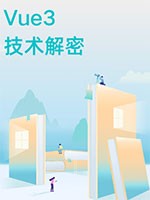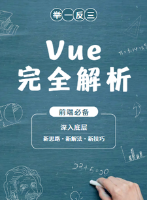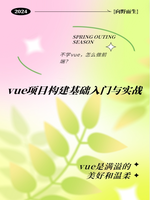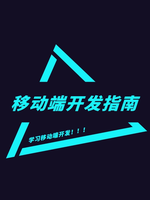7.4 实战二:弹球游戏
在前面的章节中,我们已经深入学习了TypeScript和Vue.js的基础知识,包括组件化开发、状态管理、路由配置以及Vuex等高级特性。为了将理论知识转化为实践能力,本章节将引导你通过开发一个简单的弹球游戏来巩固所学,并探索Vue与TypeScript结合在项目中的实际应用。
7.4.1 项目概述
弹球游戏(Ball Bounce Game)是一款经典的休闲游戏,玩家通过控制一个挡板来反弹不断下落的球,以防止其落地。游戏界面简单,但背后涉及到了动画处理、碰撞检测、得分计算等编程概念。使用Vue.js结合TypeScript开发此游戏,不仅可以锻炼我们的前端编程能力,还能加深对Vue响应式系统、组件通信以及TypeScript类型安全的理解。
7.4.2 项目搭建
首先,我们需要使用Vue CLI创建一个新的Vue项目,并配置TypeScript支持。如果你还没有安装Vue CLI,可以通过npm或yarn来安装:
npm install -g @vue/cli# 或者yarn global add @vue/cli
然后,创建一个新的Vue项目,并添加TypeScript支持:
vue create ball-bounce-game# 在提示时选择配置TypeScript
7.4.3 游戏组件设计
为了保持代码的清晰和可维护性,我们将游戏拆分为几个关键组件:
- GameContainer:游戏容器组件,负责整个游戏的布局和初始化。
- Ball:球组件,控制球的移动、速度以及碰撞检测。
- Paddle:挡板组件,用户可以通过键盘控制挡板的左右移动。
- ScoreBoard:计分板组件,显示当前得分。
7.4.4 实现细节
7.4.4.1 GameContainer 组件
GameContainer作为游戏的主容器,负责初始化游戏状态、渲染子组件,并处理游戏逻辑。
<template><div class="game-container"><Paddle ref="paddle" /><Ball ref="ball" /><ScoreBoard :score="score" /></div></template><script lang="ts">import { defineComponent, ref, onMounted, watch } from 'vue';import Paddle from './Paddle.vue';import Ball from './Ball.vue';import ScoreBoard from './ScoreBoard.vue';export default defineComponent({components: { Paddle, Ball, ScoreBoard },setup() {const ball = ref(null) as any; // TypeScript需要类型断言const paddle = ref(null) as any;const score = ref(0);onMounted(() => {// 初始化游戏逻辑,如启动球的运动if (ball.value && paddle.value) {ball.value.startGame();}});// 监听球的得分事件watch(() => ball.value?.score, (newVal) => {score.value = newVal;});return { ball, paddle, score };}});</script><style scoped>.game-container {position: relative;width: 100%;height: 500px;background-color: #000;overflow: hidden;}</style>
7.4.4.2 Ball 组件
Ball组件负责球的移动、碰撞检测以及得分逻辑。
<template><div ref="ballElement" class="ball"></div></template><script lang="ts">import { defineComponent, ref, onMounted, watch, computed, nextTick } from 'vue';interface BallProps {x: number;y: number;speedX: number;speedY: number;paddleWidth: number;paddlePosition: number;}export default defineComponent({props: {paddleWidth: {type: Number,required: true},paddlePosition: {type: Number,required: true}},setup(props, { emit }) {const ballElement = ref(null) as any;const { x, y, speedX, speedY } = ref({x: 50,y: 100,speedX: 3,speedY: 3});const moveBall = () => {// 更新球的位置x.value += speedX.value;y.value += speedY.value;// 边界碰撞检测if (y.value > 500 || y.value < 0) {speedY.value = -speedY.value; // 垂直反弹}// 与挡板碰撞检测if (x.value + 20 > props.paddlePosition && x.value < props.paddlePosition + props.paddleWidth) {if (y.value + 20 > 470) { // 假设挡板在底部speedY.value = -speedY.value;if (Math.abs(x.value - (props.paddlePosition + props.paddleWidth / 2)) < 10) {// 如果球击中挡板中心,增加速度speedX *= 1.1;}}}// 更新DOMnextTick(() => {ballElement.value.style.transform = `translate(${x.value}px, ${y.value}px)`;});requestAnimationFrame(moveBall);};onMounted(() => {moveBall();});return { ballElement, x, y };}});</script><style scoped>.ball {width: 20px;height: 20px;background-color: red;position: absolute;border-radius: 50%;}</style>
注意:这里的代码简化了部分逻辑,如得分和挡板控制,这些将在Paddle组件中处理。
7.4.4.3 Paddle 组件
Paddle组件负责接收键盘事件,控制挡板的左右移动。
<template><div ref="paddleElement" class="paddle" :style="{ left: paddlePosition + 'px' }"></div></template><script lang="ts">import { defineComponent, ref, onMounted, onUnmounted } from 'vue';export default defineComponent({setup() {const paddleElement = ref(null) as any;const paddleWidth = 100;const paddlePosition = ref(400); // 初始位置const movePaddle = (event: KeyboardEvent) => {if (event.key === 'ArrowLeft' && paddlePosition.value > 0) {paddlePosition.value -= 10;} else if (event.key === 'ArrowRight' && paddlePosition.value < window.innerWidth - paddleWidth) {paddlePosition.value += 10;}};onMounted(() => {window.addEventListener('keydown', movePaddle);});onUnmounted(() => {window.removeEventListener('keydown', movePaddle);});return { paddleElement, paddleWidth, paddlePosition };}});</script><style scoped>.paddle {width: 100px;height: 20px;background-color: blue;position: absolute;bottom: 0;left: 0;}</style>
7.4.4.4 ScoreBoard 组件
ScoreBoard组件负责显示当前得分。
<template><div class="score-board">{{ score }}</div></template><script lang="ts">import { defineComponent, PropType } from 'vue';export default defineComponent({props: {score: {type: Number,required: true}}});</script><style scoped>.score-board {position: absolute;top: 20px;left: 50%;transform: translateX(-50%);color: white;font-size: 24px;font-weight: bold;}</style>
7.4.5 总结
通过本章节的








